Every Tree Matters
Last winter a large cedar tree with a 1.5 m diameter fell into the Englishman River Estuary 400 m downstream of the Orange Bridge in Parksville. The tree was so large it was able to sit perpendicular in the river against the flow for many weeks before giving up and being washed against the bank at Plummer Rd. The tree had been undermined by the high winter flows in the river, a natural process that adds trees and large woody debris (LWD) to rivers and creeks which become important fish habitat.
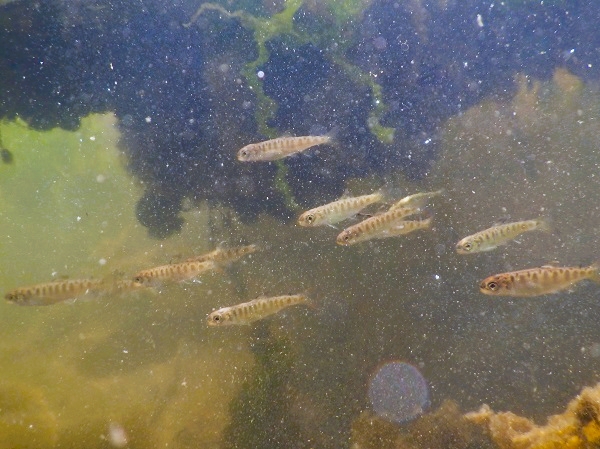
How do trees and LWD become fish habitat? When they become lodged in a river or creek, they force water to flow underneath them which scours out a pool. The fish now have a calm, shady place under the tree or LWD to hide from predators and avoid high water temperatures which can be lethal. In fact, logjams and LWD are considered "old growth habitat attributes".
The right-hand photos shows chinook salmon fry sheltering below LWD in the Englishman River Estuary - photo by James Craig
MVIHES volunteer James Craig discovered the fallen tree and realized its potential for fish habitat. He informed Nature Trust since they are the landowner of the estuary. Nature Trust approached MVIHES to partner with them in getting the tree anchored. MVIHES approached the BC Conservation Foundation (BCCF) to assist with this project since they do LWD debris installations all the time. We learned that anchoring the tree would require a large machine to lift the massive tree and drag it partly up the river bank where it could be cabled to another large tree. We would need to hire a contractor with such a machine. And even though the machine would be sitting on the bank and not in the river, we would first need a permit (Section 11) to conduct the work. The BCCF are experts at applying for the permits for doing those projects.
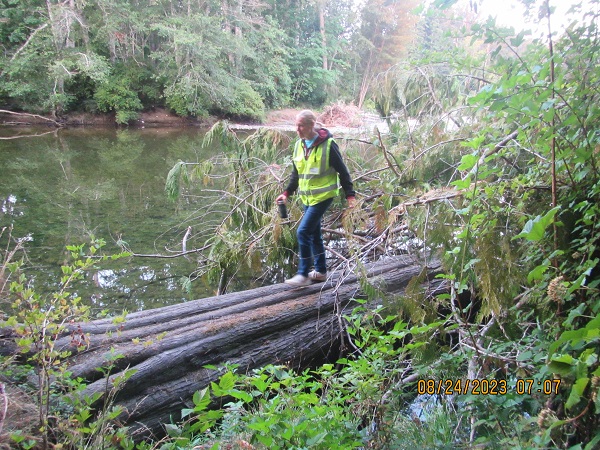
Led by MVIHES volunteer and board member, Maggie Estok, we partnered with Nature Trust in applying for a grant from the Aquatic Ecosystems Restoration Fund which is administered by Department of Fisheries and Oceans. The funds would be used for paying the contractor and BCCF. Maggie, seen in the left-hand photo scouting out the tree, kept us up to date and organized on the project.
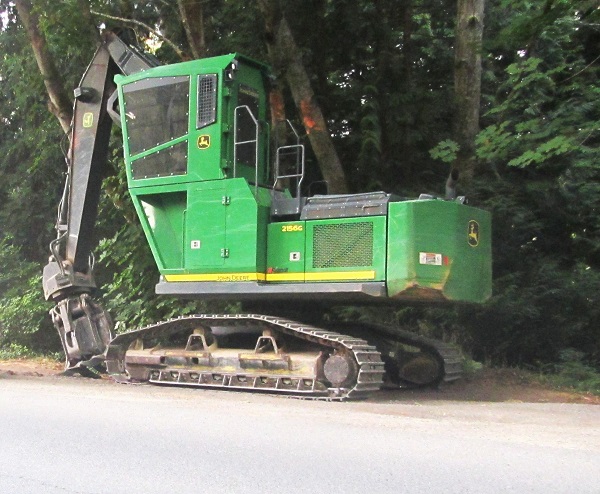
On August 24 at 7:00 am (groan), the contractor Oceanside Wood off-loaded a John Deere 216 Log Loader with grappler capable of lifting 11,000 kg, on Plummer Road (right-hand photo). BCCF Technician Carter Kowalski handled traffic control during the off-loading.
Under the supervision of Lance Gray of Oceanside Wood and Jeramy Damborg of BCCF, the log loader was carefully walked through the riparian zone to the river bank. No trees were harmed in the completion of this project.
The photos below show the grappler ready to lift the tree, and the tree in its final position on the bank ready to be cabled. Matt Fenton was the operator of the log loader. We think he had a few breathless moments when he first felt the weight of the log. Carter and Jeramy anchored the tree. Mission accomplished.
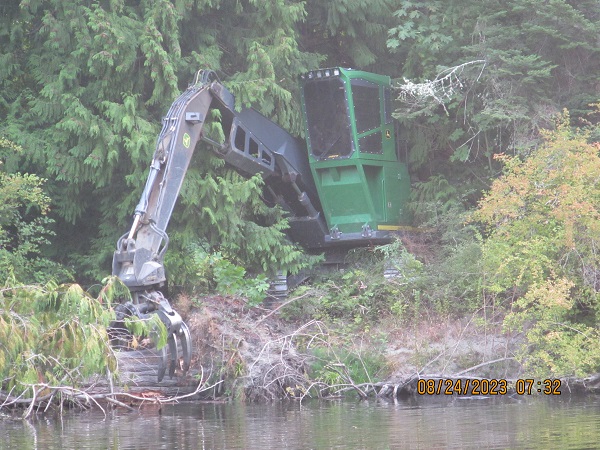
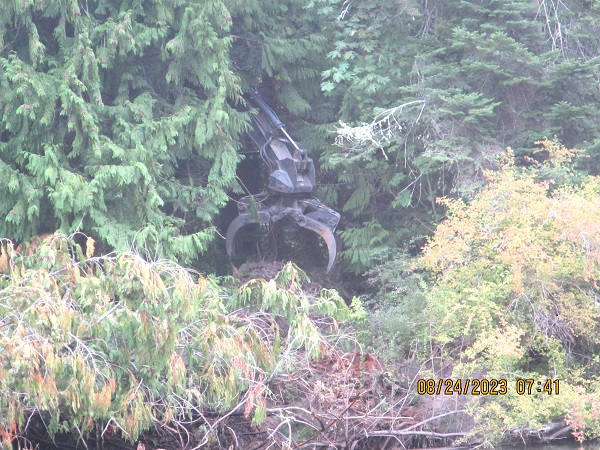
Many thanks to the Aquatic Ecosystems Restoration Fund, Nature Trust, BC Conservation Foundation, and Oceanside Wood for a great collaboration in securing one tree that can make a difference to salmon.


